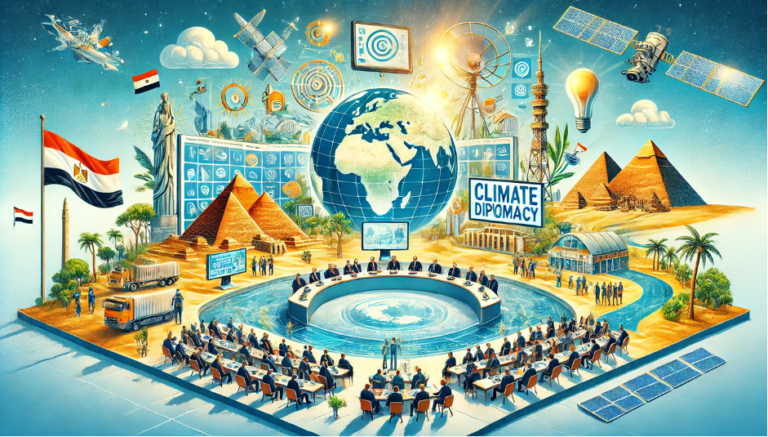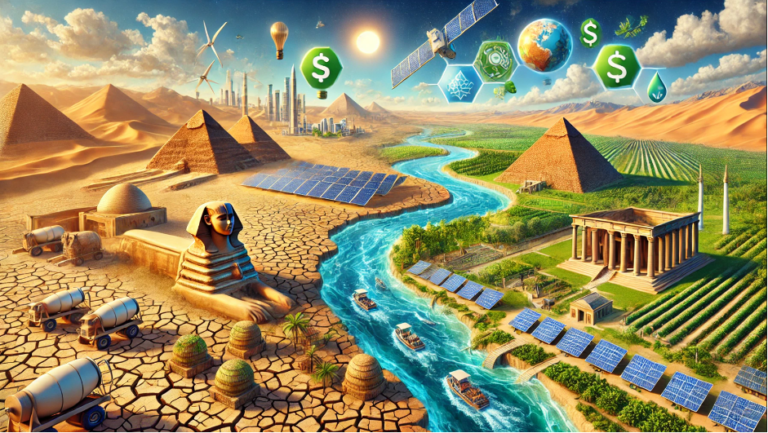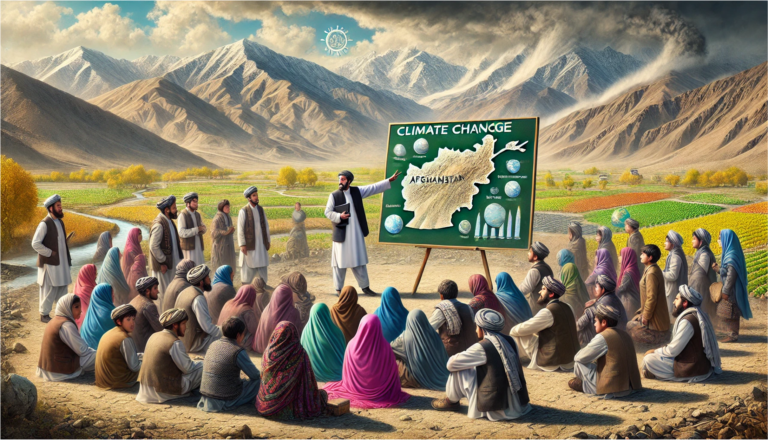Egypt, like many countries, is struggling with the multifaceted impacts of climate change, which pose significant threats to its environment, economy and population. To address these challenges, Egypt has launched a progressive renewable energy policy that aims to address these challenges by transitioning to cleaner energy sources, reducing carbon emissions and enhancing energy security. It is arguably a strategic economic opportunity that aligns with global climate goals and environmental challenges.
Egypt has set an ambitious target of generating 42% of its electricity from renewable sources by 2035. This goal reflects Egypt’s dedication to diversifying its energy mix and reducing its reliance on fossil fuels, which currently dominate the energy sector (Egyptian Environmental Affairs Agency, 2022). To achieve this goal, Egypt is focusing on large-scale investments in solar and wind power, as well as emerging technologies to produce green hydrogen. These investments are not only transforming the country’s energy landscape, but are also driving economic growth, creating jobs, and improving energy access for millions of citizens.
One of the most notable achievements of Egypt’s renewable energy strategy is the development of the Benban Solar Park, located in Aswan. Spanning a vast area, Benban is one of the largest solar farms in the world, with a capacity to generate 1.8 gigawatts of clean electricity. This pioneering project has succeeded in significantly reducing carbon emissions while providing clean energy to millions of homes. In addition to its environmental benefits, Benban has also demonstrated the economic potential of renewable energy projects. It has created thousands of jobs for local communities, stimulated investment in infrastructure, and drawn international attention to Egypt’s renewable energy sector (IRENA, 2020).
Wind power is another cornerstone of Egypt’s renewable energy policy. The Gulf of Suez, known for its strong and stable wind speeds, has emerged as an ideal location for wind farms. Projects in this area are already making a significant contribution to Egypt’s clean energy supply, reducing the country’s dependence on fossil fuels (World Bank, 2019). To ensure the success of these projects, Egypt has partnered with international organizations such as the World Bank, which provides financial and technical support. These partnerships have not only accelerated the development of wind energy infrastructure, but also ensured that projects meet global environmental and operational standards.
In addition to solar and wind power, Egypt is making rapid strides in green hydrogen, a clean energy source with huge potential for industrial and transportation applications. Green hydrogen is produced using renewable energy, making it an emissions-free alternative to traditional fossil fuels (Kamal, 2022). Egypt’s vision is to become a regional hub for green hydrogen production, serving markets across Africa, the Middle East and beyond. This initiative has attracted partnerships with countries such as Germany and international investors, who see Egypt’s strategic location and abundant renewable resources as key advantages.
Modern technologies and digital transformation are key to the success of Egypt’s renewable energy policy. The country relies on smart energy management systems and artificial intelligence to improve the efficiency of solar and wind energy projects, which contributes to reducing losses and maximizing productivity. Egypt also relies on smart energy grids that connect renewable energy sources to the national electricity grid, ensuring a more efficient and sustainable distribution of energy (Sameha, 2021). In addition, some Egyptian universities and research institutions are working in cooperation with the private sector to develop new technologies such as energy storage and improving the efficiency of solar panels.
Despite Egypt’s impressive progress in renewable energy, it faces many challenges. One of the most important challenges is securing the huge financial investments needed to build and maintain large-scale renewable energy projects. Solar energy projects, wind farms, and hydrogen production facilities require local and international financing, as well as long-term financial commitments. To address this issue, the Egyptian government is actively working with international organizations such as the International Renewable Energy Agency (IRENA) to attract investments and exchange technical expertise.
Another major challenge is preparing the workforce for the transition to clean energy. The transition to renewable energy technologies requires specialized skills and expertise, which many workers currently lack. To bridge this gap, Egypt is trying to implement training programs and educational reforms aimed at equipping workers with the knowledge and skills needed to operate and maintain renewable energy systems. These efforts are essential to ensure that the renewable energy sector continues to grow and flourish. Egypt must also work in several other areas, such as raising public awareness of the benefits of renewable energy, as this is crucial to gaining community support and encouraging sustainable practices. In addition, public education campaigns, community engagement initiatives, and transparent communication about the long-term benefits of renewable energy should be adopted as they contribute to building confidence and enthusiasm for the transition to clean energy.
Egypt’s renewable energy policy has also strengthened its role in international climate diplomacy. Hosting COP27 in 2022 was a significant achievement, demonstrating Egypt’s leadership on climate issues and its commitment to representing the interests of developing countries. During the conference, Egypt emphasized the importance of fair climate finance from wealthier countries to support clean energy projects in the Global South. By advocating for fair climate solutions, Egypt has succeeded in establishing itself as a voice for developing countries, highlighting the need for international cooperation and shared responsibility in addressing climate change. This leadership role not only benefits Egypt, but also bolsters global efforts to combat the climate crisis.
In conclusion, we can say that the Egyptian renewable energy policy represents a long-term vision for sustainable development, balancing the requirements of the present with the needs of the future. By focusing on innovation and effective partnerships, Egypt is establishing a strong foundation for a comprehensive transition to clean energy. This vision is not just a response to challenges, but a global call for cooperation to achieve a brighter and more sustainable future, where clean energy is a driving force for positive change at the environmental, economic and social levels.










+ There are no comments
Add yours